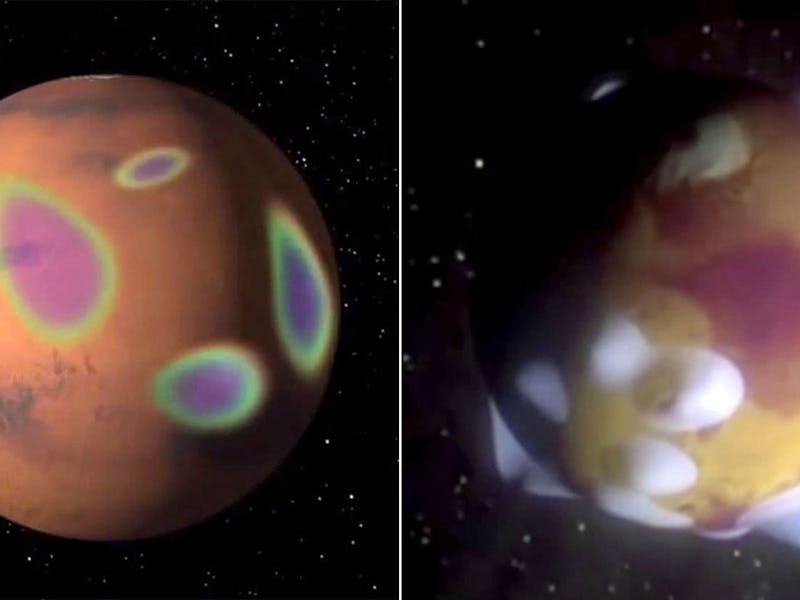Scientists Find the Remains of a Catastrophe on Mars Scattered Across the Planet
Unraveling Mars’ magnetic mystery.

The Zhurong rover has operated on the surface of Mars for over a year since it deployed on May 22, 2021. Before the rover suspended operations on May 20, 2022, due to the onset of winter and the approach of seasonal sandstorms, Zhurong managed to traverse a total distance of 1.921 km (1.194 mi).
During the first kilometer of this trek, the rover obtained vital data on Mars’ extremely weak magnetic fields. According to a new study by researchers from the Chinese Academy of Science (CAS), these readings indicate that the magnetic field is extremely weak beneath the rover’s landing site.
The research was led by Aimin Du, Yasong Ge, and Huapei Wang, three professors with the CAS Engineering Laboratory for Deep Resources Equipment and Technology and the Institute of Geology and Geophysics (IGGCAS). They were joined by researchers from the National Astronomical Observatories, the School of Geophysics and Geomatics, the College of Earth and Planetary Sciences, the National Space Science Center, the Institute of Spacecraft System Engineering (ISSE), and multiple universities and research institutes. The research paper that describes their findings recently appeared in the journal Nature Astronomy.
An image from China’s Zhurong rover shows spacecraft hardware in the foreground and Martian terrain in the background.
While Mars does not have an intrinsic magnetic field (magnetosphere), there is evidence that it did roughly 4 billion years ago. This evidence is recorded in the planet’s crust, which retains weak magnetic fields distributed across the surface. Orbital measurements of these fields were conducted by the Mars Global Surveyor (MGS) and Mars Atmosphere and Volatile EvolutioN (MAVEN) spacecraft, which recorded terrestrial crustal fields that were up to 1,500 nanoteslas (nT) in strength, but with a global average of about 200 nT.
When studying the crust in the Elysium Planitia region, the InSight fluxgate magnetometer (IFG) aboard NASA’s InSight mission obtained readings that were an order of magnitude stronger — about 2,000 nT. Zhurong, the first rover equipped with fluxgate magnetometers, obtained magnetic readings from 16 sites along a 1,089 m (3,570 ft) track in the Utopia Planitia region — roughly 2,000 km (1240 mi) northwest of the Insight mission’s landing site. However, Zhurong’s two magnetometers obtained readings indicating the precise opposite of what the Insight lander obtained.
The results indicated a field strength of about 20 nT, an order of magnitude lower than the measurements inferred from orbit. These extremely weak readings imply that the crust beneath Utopia Planitia may have remained unmagnetized since its formation during the early Hesperian (ca. 4 billion years ago) or that it was demagnetized by a sizable impact that came later. These findings provide a new constraint on the timeline for Mars’ magnetosphere and when it disappeared. They also shed further light on Mars’s magnetic, climatic, and interior history and how they are interconnected.
Knowing how and when Mars’ magnetic field disappeared is vital to the ongoing astrobiological studies on Mars. By understanding how and when it transitioned from a warmer planet with flowing water on its surface to the extremely cold and desiccated place it is today, scientists hope to learn whether or not there was enough time for life to emerge on Mars. Knowing this could also provide insight into where it might still be found today.
This article was originally published on Universe Today by Matt Williams. Read the original article here.
This article was originally published on